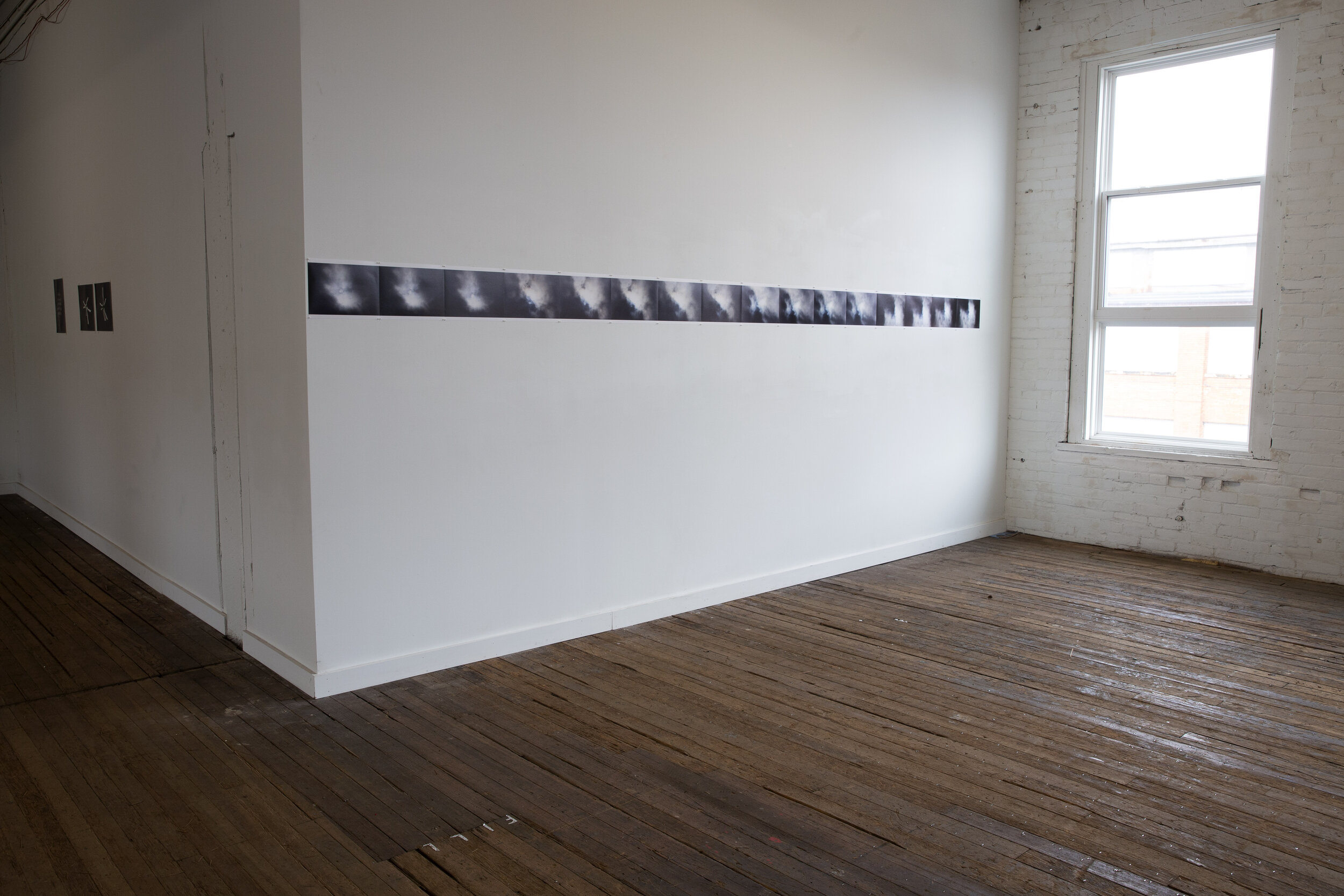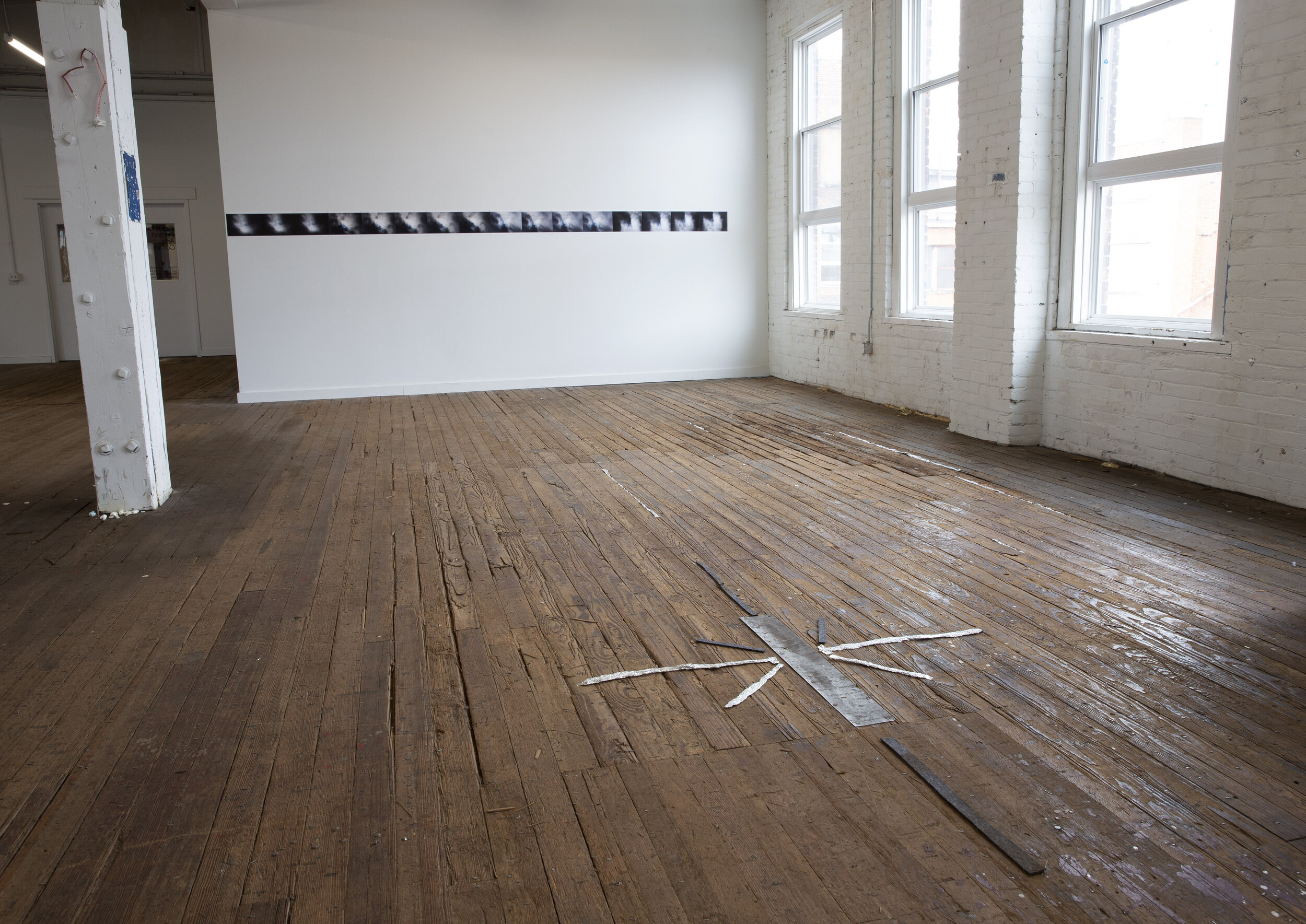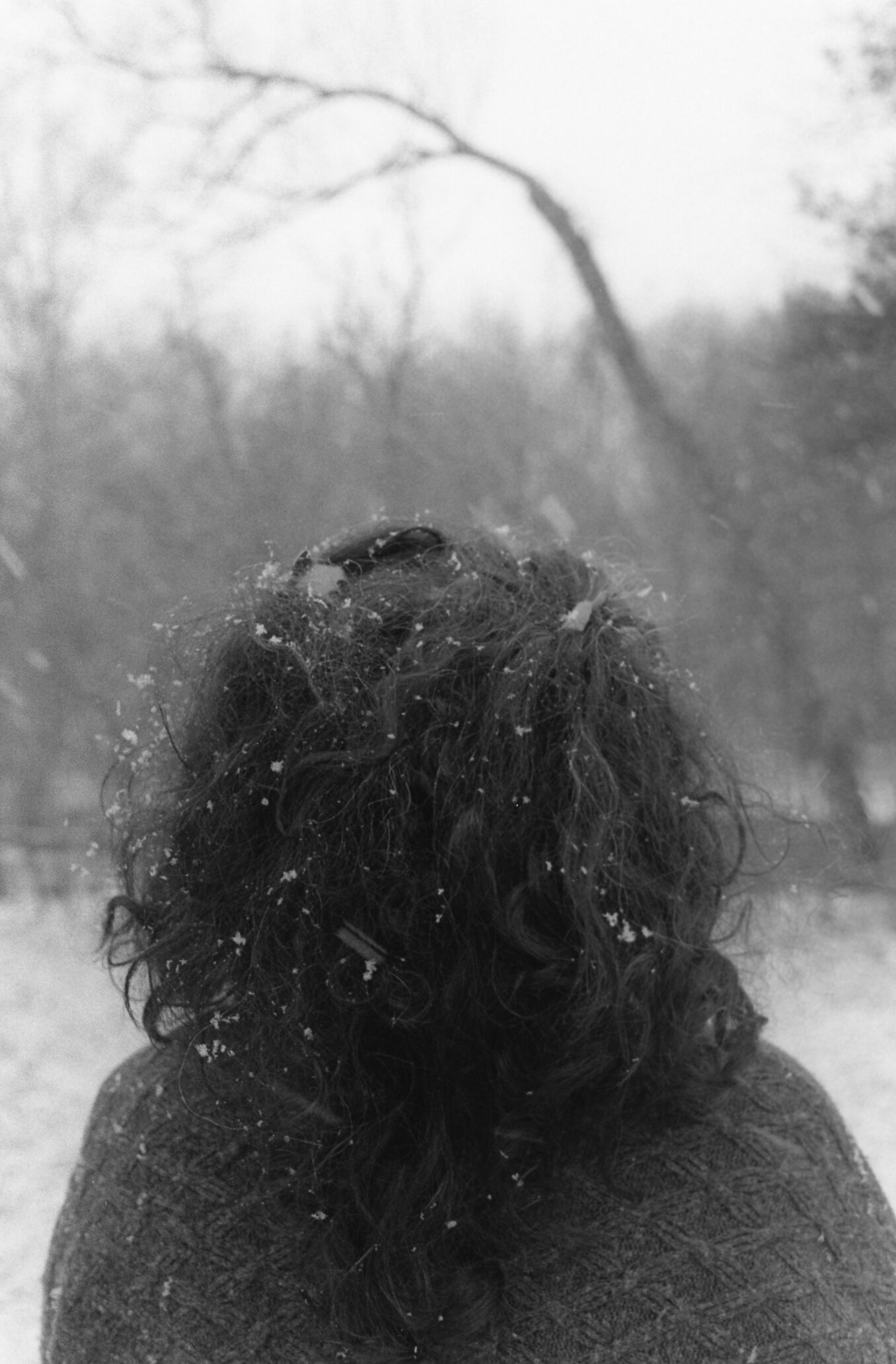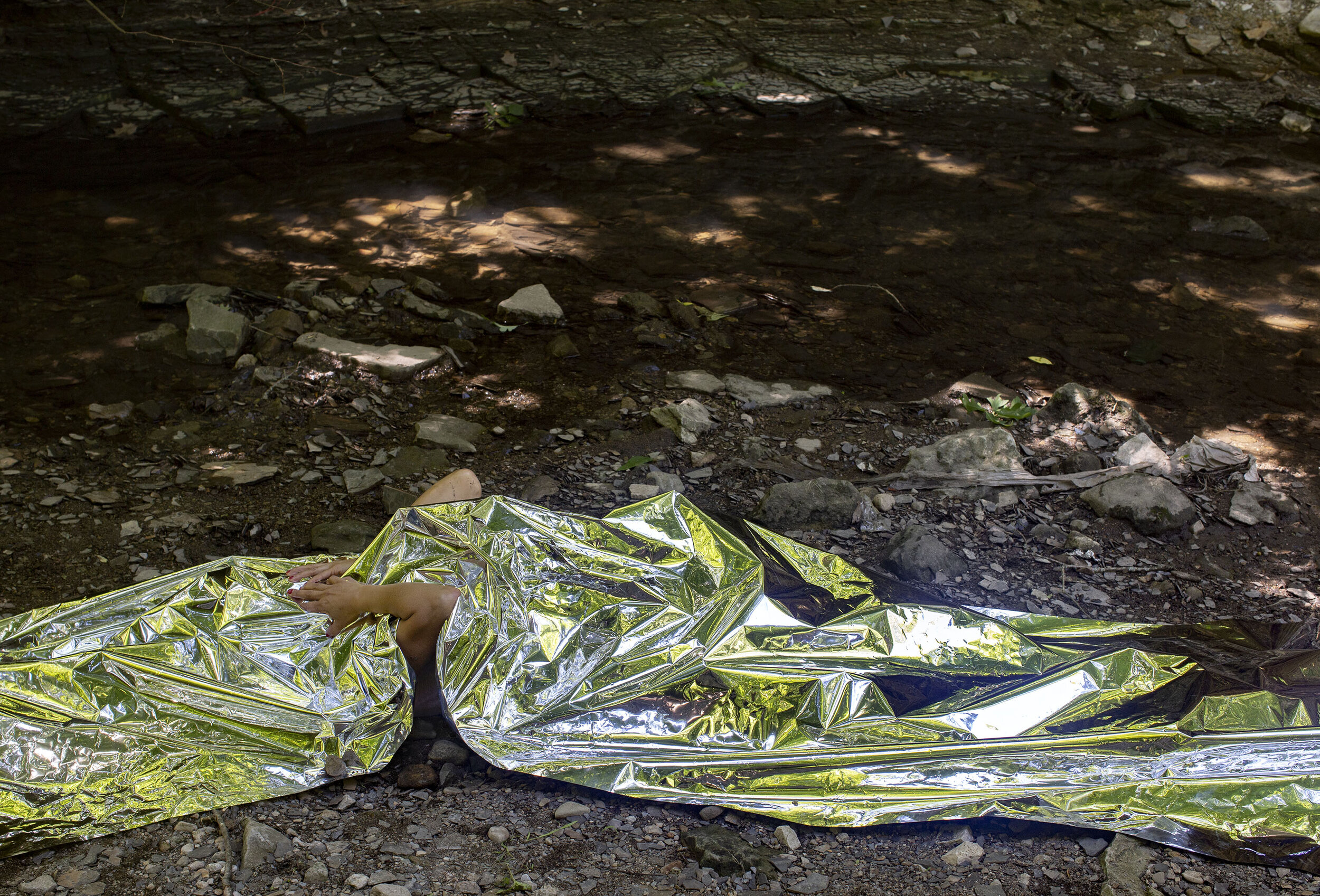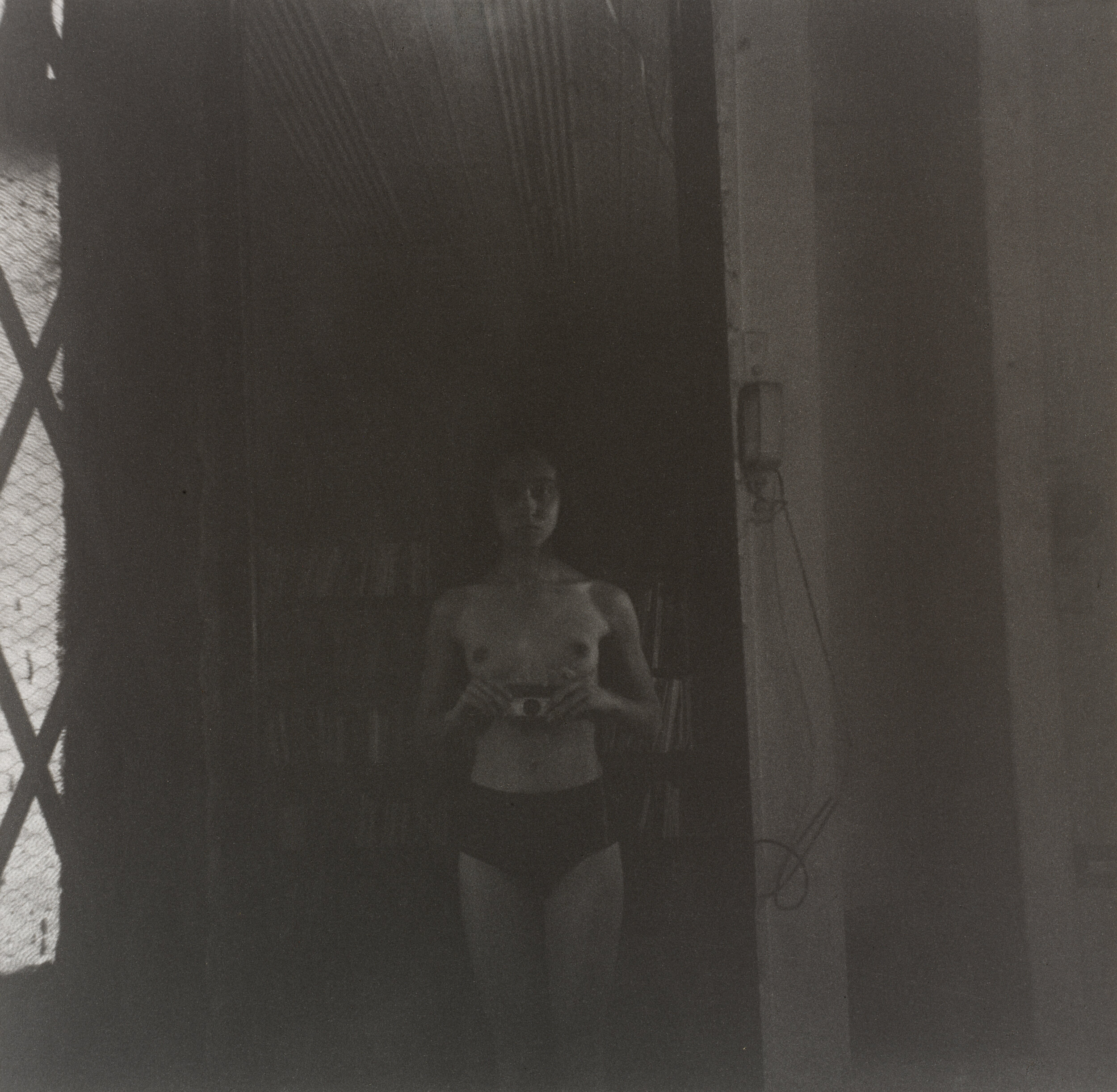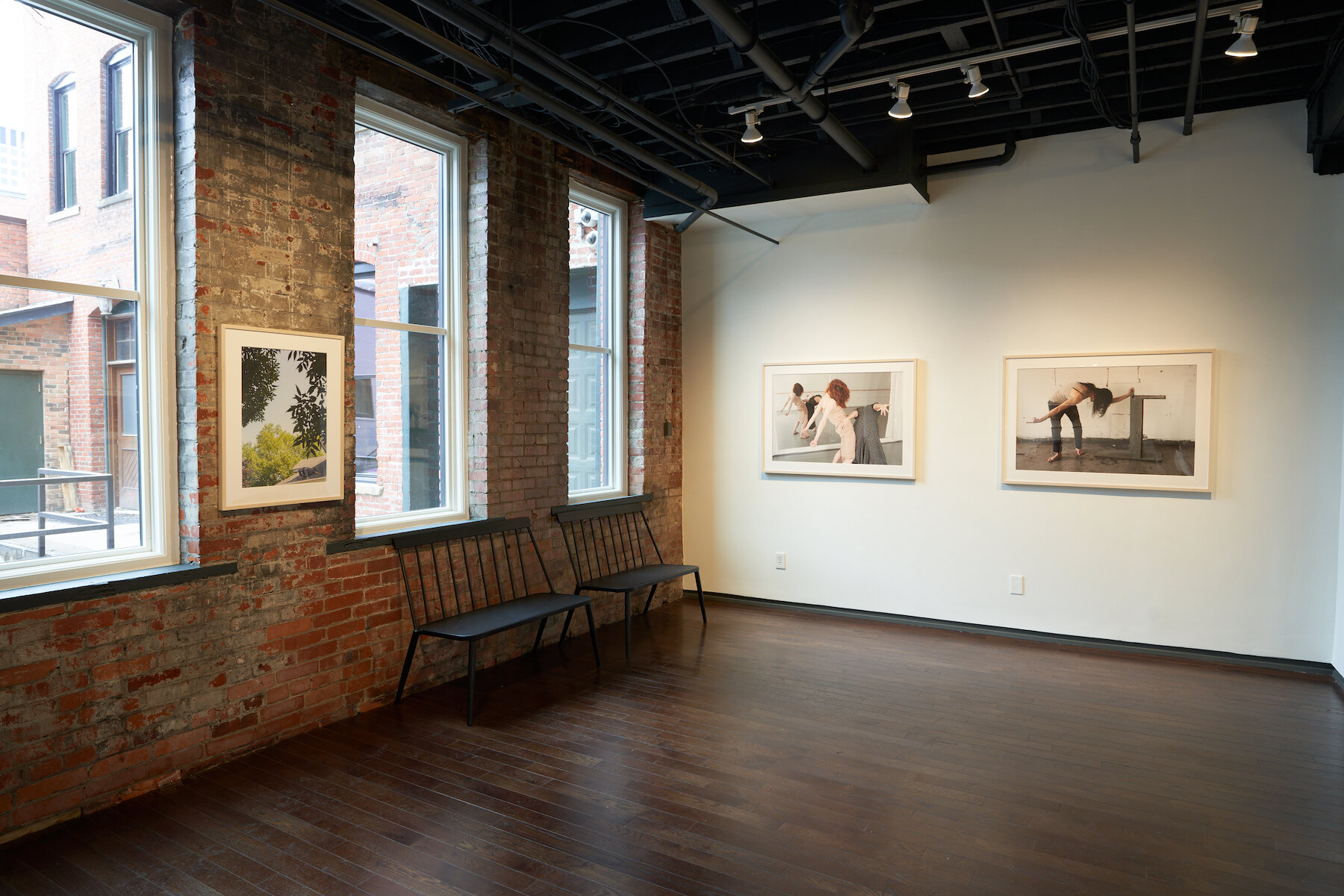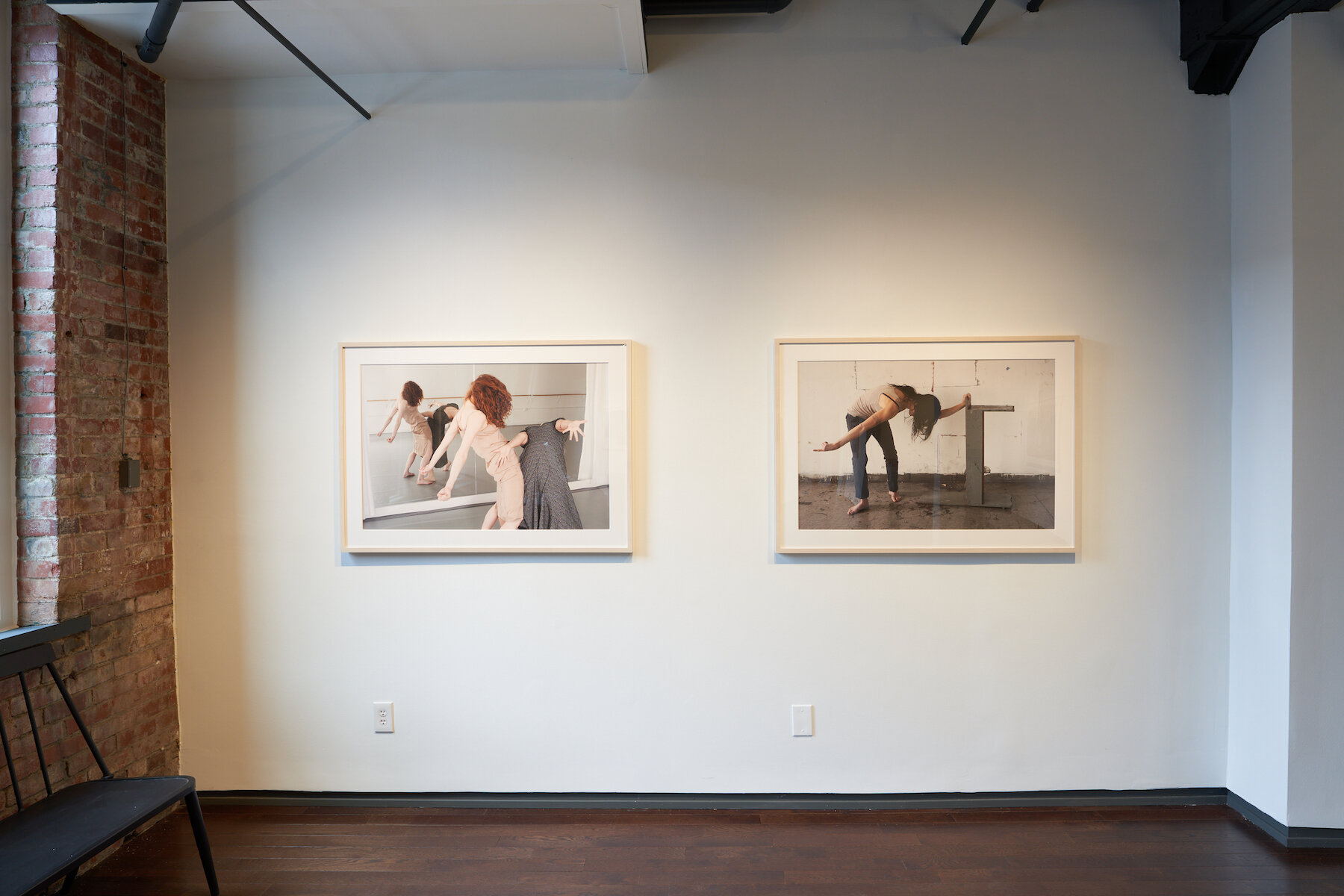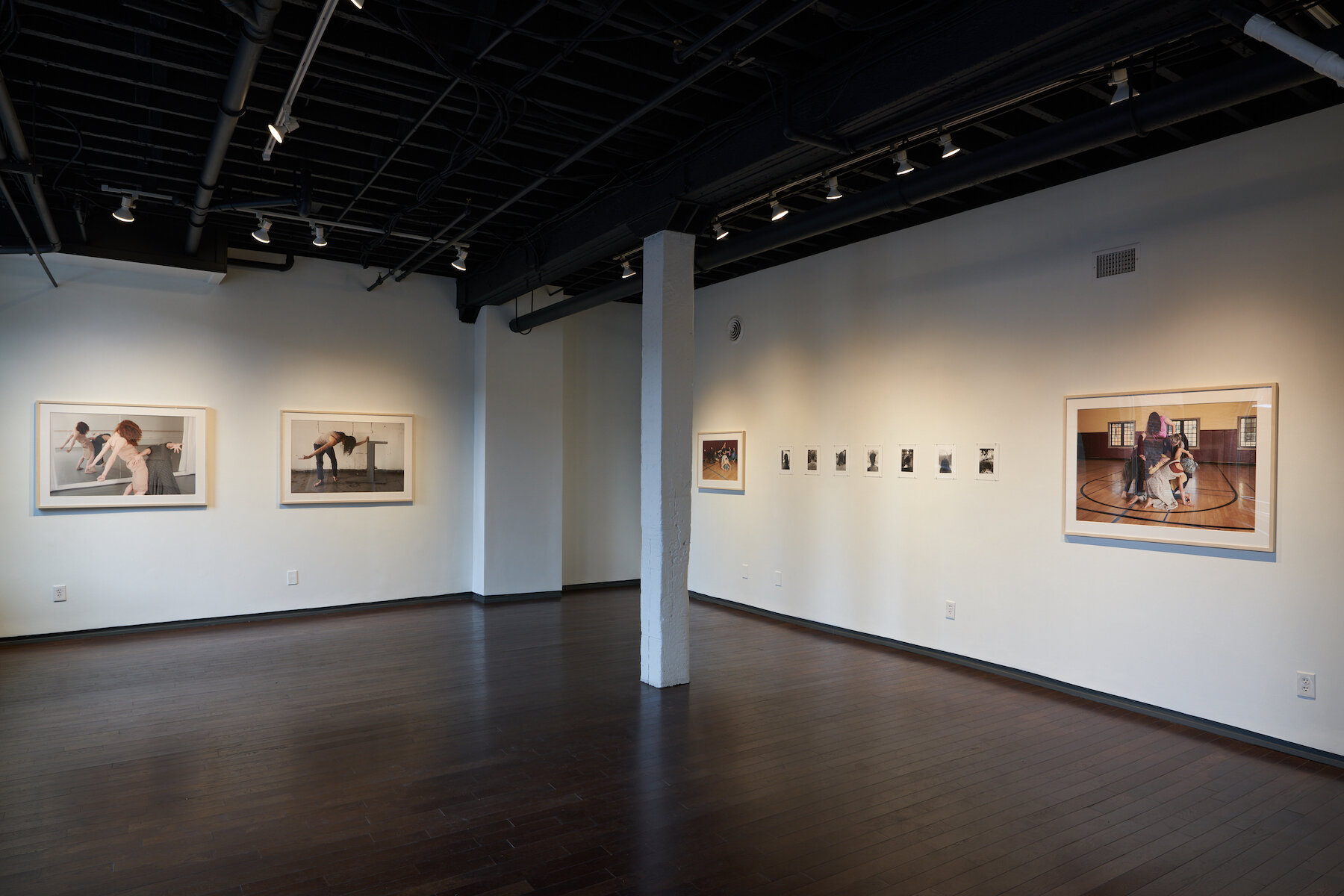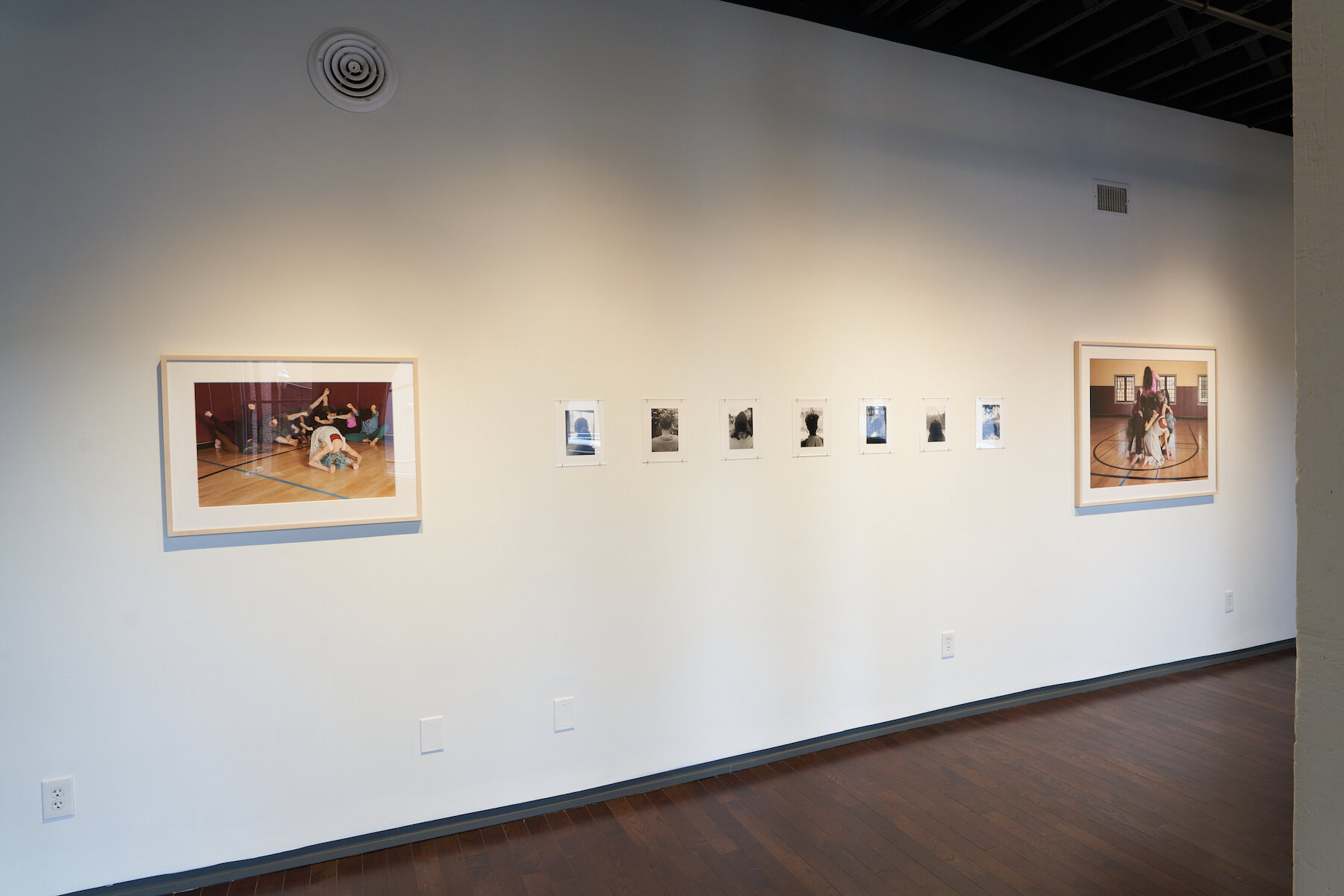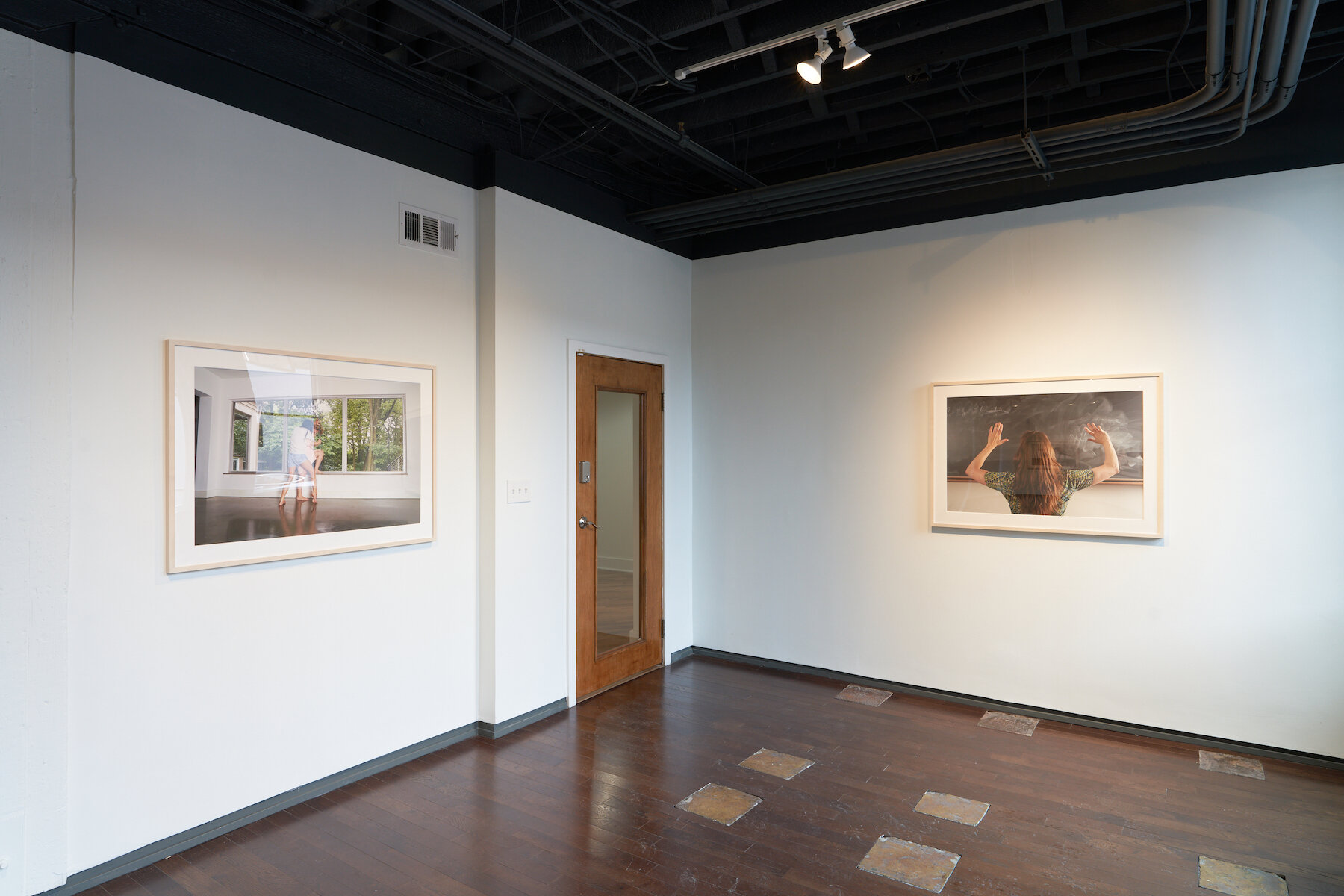The girls were rebelling. The girls were acting out. The girls had run away from home, that much was clear.
Justine Kurland’s Girl Pictures gathers for the first time her photographs of girl gangs roving the American landscape, produced between 1997-2002. The pictures holler—let’s get out of Dodge!—as her protagonists skip town, get lost, and make do. Kurland sought her teenage collaborators on the fly and the improvisational aspect of the pictures is keenly felt. This spirit distinguishes the work from the archly cinematic ethos of the 1990s including the work of her teachers Gregory Crewdson and Philip Lorca diCorcia. She began the project as a graduate student in the Northeast and the book charts the development of the work as she traveled west. Her egalitarian gaze sweeps through American cultural landscapes, mapping city streets, industrial wastelands, the in-between spaces of highways and developments, thick forests, yawning deserts, and Pacific shores. The skies open up and they disappear. Her kinship with 19th century landscape photography is evident in the unapologetic awe of her settings and her travels run parallel to the runaway force of her protagonists’ adventures as they traverse these freighted vistas. A feminist trick mirror, Kurland’s road trip hijacks the archetypal journey of American westward expansion.
Within these tableaux, Kurland sets her protagonists loose, unleashing an emotional immediacy more often associated with the handheld camera. In Broadway (Joy) (2001), the camera is angled down on two girls as they dance on an empty desert road. Their energy fills the frame although the scale of their figures is diminutive. The body of one girl takes flight by the force of her exuberance, her blurred arms becoming wings. Kurland hitches the contemplative aspect of landscape to quotidian energy of the snapshot, creating both physical and emotional space for her heroines. In The End (2001), two tiny figures stand on the peak of a desert mound, their silhouettes camouflaged in a sea of cacti. They’re not surveying the landscape nor are they are they subsumed in it. Instead, they inhabit the threshold between the terms of actor and setting. The history of photography is a lonely place for women as subjects and producers and the thrill of Girl Pictures is how Kurland disarms the gendered legacies of landscape with a shrug.
Kurland’s landscapes make space for her teenage heroines within the American literary tradition of the quest narrative. The girls audition the characters from this tradition: runaway, explorer, cowboy, pirate, rebel. But, as stories go, not much happens in Girl Pictures. The girls smoke cigarettes, set fireworks, juggle, roast marshmallows, hula hoop, strum guitars, cuddle, play cards, horse around. They’re killing time, basking in the pleasures of being unproductive members of society, and storytelling abhors lollygagging. Pulsing with the ineffable joy of being a teenager, the book mixes bucolic and feral pleasures. Forest (1998) gathers a party of girls in a glade of trees. Three of them tenderly makeover a fourth, braiding her hair with flowers and applying lip stick. I feel like I’m witnessing a secret assembly of the Cottingley Fairies rather than an ordinary teen ritual lifted from a domestic setting. Kurland indulges a voyeuristic impulse to watch the girls without fetishizing them, making space for them while keeping their secrets. The photographs grant privileged access but refuse to narrate.
The emotional undertow of Girl Pictures lies in its nuanced portrayal of female intimacies. I see in the photographs the familiar camaraderie of friendship, the comfort of touch, the tension of competition, the play of mimicry, the libidinal pull of desire. I like her, I want to be her, I want her, I mother her, I love her, I see her. Strands of attachment knit together in barely perceptible dramas. Boys make an occasional appearance in Girl Pictures. At best they can fix a car (Pop the Hood, 1998) or provide some sexual healing (Making Happy, 1998) in an abandoned one. More often, they function as objects of scorn in a suite of images titled Boy Torture where they are teased, taunted, and physically brutalized. In Boy Torture: Love (1999), a crew gathers around a girl who’s taking off her top off while another covers the eyes of a boy. This gesture—to render him blind—is the photograph’s red herring. With her back to the camera, the girl strips for her female audience. They look at her and each other in a relay of looking, a circuit of curiosity and desire. This same energy animates Clothes Make the Man, Desert Scene (2001) with two girls absorbed by their reflection in a broken mirror. Kurland queers girlhood, harnessing the gravitational pull of the gaze as the central dynamic of her dramas.
Kurland observes in her catalog essay, “Cherry Bomb”: “being a teenage girl is nothing without the willingness and ability to posture as the teenage girl.” It’s this friction between identity and its cultural performance that’s at play in the photographs. In Laura Mulvey’s formulation of the male gaze from her essay, “Visual Pleasure and Narrative Cinema,” male characters act within a context, drive the classic Hollywood story forward. Women appear as pure visual pleasure for the viewer, filling the frame of the screen. They are mirages without subjectivity. Kurland pushes beyond a reversal of Mulvey’s binary; being and appearing rub up against one another in her photographs. The girls decidedly occupy their landscapes but are nonchalant in their belonging with their Didion-like slouching dynamically repurposed. Their relationship to one another is their true landscape and this bond hums through even the most languorous scenes, no matter the numbers. In Field Trip (1998) and Golden Field (1998), the number of girls multiplies, loose-limbed armies picking their way through fields of tall grass and goldenrod. These crowd scenes massing suggests protest or pilgrimage, but their destinations remain uncertain. Kurland stages coming of age as a communal experience within space, rather than a singular, consuming quest through it. The centripetal force of the hula hoop pulses throughout Girl Pictures: “The intensity of our becoming funneled up vertically from where we sat.”
Risk limns the theatrics of rebellion and Kurland acknowledges the cracks in her idylls. Getting into Big Rig Cab (1997) touches the exposed nerve of her liberatory fantasies. The photograph depicts a girl standing by the open door on the passenger side of a truck, her backpack on the seat. Her glance telegraphs the moment as she weighs the perils of her escape, the cramped space of the cab a gauntlet to a separatist teen Eden. If Getting into Big Rig Cab plays on the familiar warnings of the runaway story, Kurland also allows less theatrical forms of anxiety to infiltrate. In Snow Angels (2000), four girls lie in a patch of land adjacent to a highway, the long, dead grass poking through a thin layer of white. Their faces are turned towards the gray sky, but their expressions are concealed by the camera’s positioning near the ground. Are they resting, exhausted from angel-making? Or is the camera bearing witness to dead bodies on the side of a road? The image plays on the troubling ambiguity of photographs and their capacity to collapse immediacy with memorial. This note of doubt complicates Kurland’s fictions of emancipation.
Forest Fire (2000), the last image of the book, depicts a solitary black girl weaving through a smoldering grove of trees, fires still blazing in the background. Kurland dreams a moment where rebellion turn to the revolutionary fire of burn the patriarchy. The protagonist represents one of the few black figures in these overwhelming white dramatic tableaux, and, in the context of this collection, the only one accorded a starring role in these escape fantasies. She’s disenfranchised from a community in this landscape and the implied catalyst of its destruction. Forest Fire channels the cultural freight of black female rage and the fault line of its ambivalence—only the ruins of her fury can be seen. The photograph offers a mea culpa, an acknowledgement of the blind spots of Kurland’s utopic vistas that exclude brown and black girls. But I also understood its canny placement as the book’s finale as an open question, clamoring even louder in the summer of 2020. Kurland’s once-girl retrospection tempers this fuck-it-all devastation with solemnity. How to move forward after burning it down? How to imagine freedom while accounting for the damages of history and culture? Girl Pictures links reverie and reckoning, welcoming the generative and unsettling place of uncertainty in her fantasies of liberation.












